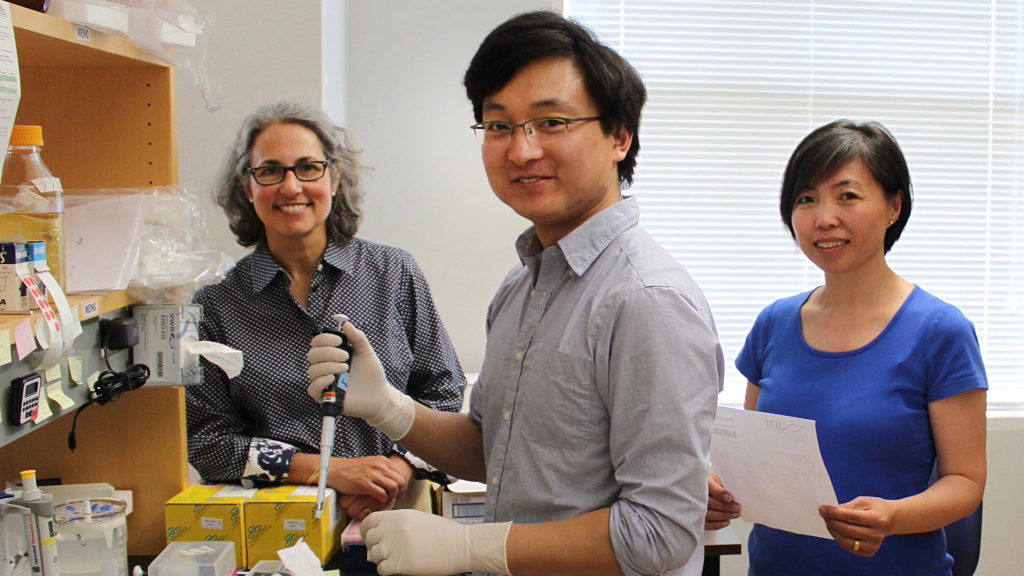Developing IPS cells to Screen Drugs which can Reactivate the FMR1 Gene

Anita Bhattacharyya, PhD
Principal Investigator
Xinyu Zhao, PhD
Co-Principal Investigator
University of Wisconsin
Madison, WI
2012-2033 Grant Funding: $146,000
Summary
Drs. Anita Bhattacharyya and Xinyu Zhao at the University of Wisconsin launched a project to develop human patient‐derived induced pluripotent stem cells (hiPSCs) and new mouse model of Fragile X syndrome to enable testing of gene reactivation and gene therapy approaches to treatment. In 2015, The John Merck Fund assumed support for this work with a generous grant of $750,000.
The Results
The Science
One approach for treating Fragile X is to reactivate the silent FMR1 gene to restore expression and function. While this can be done to some extent in vitro (with cells in the lab), it has yet to be translated into live animals, mostly because the most-widely used FX mouse model has the gene entirely removed (knocked out) rather than the CGG repeat which leads to methylation (shutting down) of the gene. In addition, it is crucial to test the FMR1 reactivation in the brain, where the lack of FMRP is most relevant.
This project is a collaborative effort between Anita Bhattacharyya and Xinyu Zhao to develop and test a reliable and reproducible model that can be used for testing reactivation of FMR1 in human neural cells. We are transplanting human Fragile X neural cells differentiated from induced pluripotent stem cells (iPS cells) into brains of neonatal mice and then testing FMR1 reactivation by demethylating compounds and targeted gene expression. We are also developing a system to monitor expression of the silenced FMR1 gene using gene editing technology in human Fragile X stem cells that will enable screening of compounds that can reactivate FMR1. Together, these two strategies will provide a new model to test reactivation of the FMR1 gene in mice and will provide a test-bed to screen compounds for reactivating FMR1.

